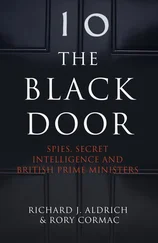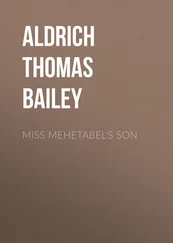Those who remained at Bletchley Park were also thinking of ‘escape’ – but in a different sense. For them, the end of the war did not so much offer an opportunity of personal freedom, but more the possibility of liberation for the GC&CS. Their remarkable achievements over the last five years suggested that GC&CS might cease to exist under the cloying direction of Britain’s traditional overseas secret service, SIS, where the senior staff were often failed cavalry officers recruited in White’s or Boodle’s. Instead, GC&CS might hope to become an intelligence agency in its own right, perhaps one of a new and different kind. Indeed, its rising status was already signalled by a gradual change in everyday usage from terms like ‘GC&CS’ and ‘BP’ to the rather grander cover name of ‘Government Communications Headquarters’, or ‘GCHQ’, which had been in intermittent use since early 1940. 43
Bletchley Park had already taken some important strides towards becoming a fully-fledged intelligence service. Peter Calvocoressi, one of its distinguished wartime denizens, recalls that in its pre-war incarnation the Government Code and Cypher School was exactly what its name implied, ‘and no more’. It made up codes for use by the British government, and broke the codes of other nations. But at Bletchley Park, and especially under Gordon Welchman in Hut Six, code-breaking was gradually married to an intelligence process to provide a sophisticated system for sigint exploitation. No less importantly, Bletchley also designed a means for the secure and rapid distribution of sigint to essential customers, even in distant theatres such as South-East Asia. The sheer pressure of wartime exigency forced rapid and logical developments that might otherwise have taken decades. 44
Another massive achievement was that Bletchley Park and its diplomatic equivalent at Berkeley Street in London were properly ‘integrated’, mixing up staff from the three armed services and civilians. This was immediately obvious to any visitor from the curious blend of uniform and civilian dress, often in exotic combinations. Occasionally a visiting Admiral or General would fulminate to see members of his service dressed in colourful pullovers, and demand that they return to full uniform. However, the top brass on day trips from Whitehall were little more than a temporary nuisance. During the 1940s a sigint service which mixed up civilians and personnel from the armed services was quite remarkable. It would take the Americans until the early 1950s to achieve an integrated organisation that mirrored Bletchley. In Nazi Germany as Calvocoressi recalls, the situation had been even worse, for there ‘six or seven different cryptographic establishments fought each other almost as venomously as they fought the enemy’. 45
In the social anthropology of intelligence, sigint was emerging as the dominant tribe. ‘The Ultra community at BP saw itself as – perhaps was – an elite within an elite,’ recalled one code-breaker. Material gathered by other kinds of intelligence agencies was merely ‘Top Secret’, but sigint material was compartmentalised as ‘Top Secret-Ultra’. The ability to impose draconian security on its product would be a hallmark of a fully-fledged sigint organisation, and dominated its relations with its friends and allies in the code-breaking world. This security obsession also extended to people. The security rule at Bletchley Park was ‘Once in, never out.’ In other words, once people had worked in sigint, there was a reluctance to allow them to move to other areas of war work, and they were effectively ‘captive’ for the duration of the war.
Dominance was partly about size. By the end of the war, over ten thousand people were labouring under Bletchley’s direction. The expanded bombe effort alone led to the creation of five further outstations as far away as Stanmore and Eastcote on the outskirts of London. Working alongside GC&CS were the listening units of the armed forces, known as the Y services. Although these fed high-grade material to Bletchley Park, they also worked on low-grade material for their own purposes. Often considered ‘poor relations’, they derived their intelligence either from listening in to low-level tactical communications that were not encrypted, including clear voice traffic, or by simply analysing the flow of traffic. Analysing the patterns of radio traffic, including volume and direction, even without breaking the codes, could reveal a great deal of information about the enemy, and GC&CS worked closely with the armed services to develop what were known as the ‘Y stations’. Bill Millward, who continued to serve long after the war, recalls that Bletchley Park’s relationship to the Y services was to become ‘a sort of university of signals intelligence, developing techniques which all might share’. 46 The Y services had been largely responsible for deducing the enemy ‘order of battle’, the structure, strength and location of the units of the German armed forces. The Navy ran intercept sites at Scarborough and Winchester. The Army ran a site at Fort Bridgelands near Chatham, and later opened a station at Beaumanor Hall near Loughborough in Leicestershire. The RAF were located at Cheadle in Cheshire, and developed a large new site at Chicksands near Baldock in Bedfordshire. Many of these locations would continue as sigint sites after August 1945. 47 All of them were symptomatic of an industrial revolution in secret intelligence: both Bletchley Park and the outstations operated like factories, with three gruelling shifts each day.
At a deeper level, there had also been a social revolution in British intelligence. Brilliant individuals who only a year before had been members of international chess teams or wrestling with obscure mathematical problems in Cambridge colleges, were now focused on intelligence. Remorselessly logical, they could see that Bletchley Park was the intelligence machine of the future. Moreover, they were outsiders, with no sense of bureaucratic anxiety and no fear of the ‘Establishment’. They fearlessly articulated what to them was self-evident. GC&CS, once a small school of code-breakers working in the service of SIS, had now vastly outgrown its parent organisation. Gladwyn Jebb, one of a number of rising British diplomats who were temporarily attached to intelligence duties during the war, noticed this dramatic change. The organisations like Bletchley Park had been forced to recruit widely from industry and the universities to fill their ranks, so they had forward-looking staff who brought with them modern organisational techniques. 48 Jebb complained that SIS had ‘too much of what I would call the “false beard” mentality…more especially amongst those who have been in the show for a very long time’. The world had moved on, he argued: ‘The idea of a deeply mysterious “Master Spy”, sitting in some unknown office and directing an army of anonymous agents, is as outdated as it is romantic.’ 49
The Americans had also opened the eyes of GC&CS to what was technologically possible. Although hobbled by the bitter Army–Navy divide, Washington nevertheless threw vast scientific resources at sigint. On their visits across the Atlantic, a core of determined individuals from Bletchley were able to glimpse what the future might hold. In 1944 a small group of talented British code-breakers began the long-range planning that would turn wartime Bletchley Park – with its chess players and crossword puzzlers – into Britain’s premier post-war secret service, with a strong sense of identity, a large budget and predatory designs on other agencies. Three key figures were instrumental in this: Gordon Welchman, the man behind Bletchley Park’s intelligence processing centre; Harry Hinsley, who would serve as the ‘sherpa’ for the Anglo–American–Commonwealth sigint summits after 1945; and Edward Crankshaw, who had handled wartime sigint discussions with the Soviets. Hugh Foss joined them on his return from a posting in Washington. 50
Читать дальше












